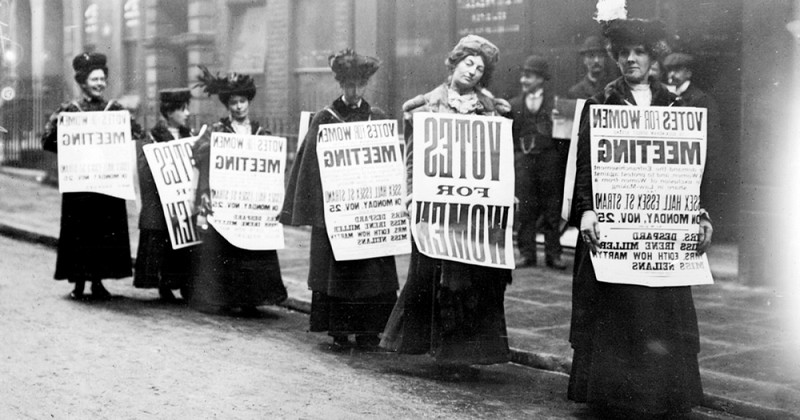Suffragettes: the feminist heroines of early democracies

These feminist leaders succeeded in improving the living conditions of women.
In order to understand the present, we must delve into the past and the early movements that initiated the shift from despotism to a time of much greater equality. In the case of gender equality, the first people to push for change were the suffragettes.representatives of one of the earliest forms of feminism.
But... who exactly were the suffragettes and what did they stand for?
What are suffragettes?
The suffragettes were a political-social group that emerged in the late nineteenth century and was consolidated in the early twentieth century. In its beginnings it was led by the famous Emmeline Pankhurst. (1858 - 1928), an atypical figure from the very beginning, fleeing from the traditionalist feminine laminate (this is partly because she did not receive a "little princess" education, as historians point out, but was raised and educated in a family that was in favor of civil rights).
It is therefore a political and social movement of organized women. a political and social movement of organized women who during the 19th century maintained a political struggle with the authorities of male-dominated England, in a context in which women routinely experienced sexual abuse at work by their masters, were denied the right to study, and their husbands had the power to punish their wives as they saw fit.
In broad strokes, suffragettes moved away from conventional peaceful or verbal demands to action. or verbal demands for action: "Deeds, not words".
This slogan was spearheaded by this movement on a permanent basis, suggesting acts that would attract the attention of the British authorities. Well, this directive was taken to the letter, and therefore the pressure exerted by this political collective became impossible to ignore.
Inspiration and political references
Like any great important and influential character in history, Emmeline Pankhurst received from her childhood a vindictive and conscientious education with social progress. These values were evident in the movement she led.
The suffragettes were motivated by the feminist magazine "Women's Suffrage Journal", founded in 1870 by Lydia Becker and Jessie Boucherett. Considered the first activists for women's rights, Emmeline and her mother Sophia Jane met Lydia Becker at a meeting that dealt with women's suffrage.. "I came away from that meeting convinced that I was a committed suffragist," Pankhurst said.
Another turning point for the suffragette movement was the fact that it the values of the French Revolution with one small nuance: equality.equality. All demands for civil and human rights, protests or other similar demands, were intended exclusively for men, the movement denounced.
Modus operandi of the suffragettes
Women's suffrage rights date back to the beginning of the 19th century, but it was not until the middle of this period that the suffragette movement took hold in England (around 1855). In imitation of any other type of political protest, the movement was initially articulated in a peaceful and democratic manner, introducing amendments in the English Parliament to extend women's rights..
It was at the end of the 19th century that the Suffragettes decided to take another path. When a petition in the House of Commons by MPs John Stuart Mill and Henry Fawcett, the famous "Ladies Petition" to change the word "man" to "person" when referring to suffrage, was rejected, the National Society for Women's Suffrage was created, the National Women's Suffrage Society was created by the aforementioned by the aforementioned Lydia Becker.
Revolution in the streets
After unfulfilled promises, misleading laws and institutional disregard for all that had been demanded to date, the first public incidents were recorded by the suffragettes: rioting, disturbance of order, urban violence, property damage and even the occasional act of terrorism against the Chancellor of the Exchequer, David Lloyd George, in his own mansion.
One of the victims belonging to suffragism, Emily Wilding Davison, was martyred in 1913 when she assaulted King George V's horse to show him the flag of her organization and give voice to her discontent. "One tragedy would prevent thousands to come," Emily advocated until her death.
The legacy of the first feminist struggle
Thanks to the suffragettes' busy but successful trajectory,several of the greatest achievements for women's rights have been made.. Everything changed in 1928, when women's suffrage was approved. Later on, women students would be admitted to universities such as Oxford or Harvard, women deputies would be included in European parliaments, and they would play a leading role in the world of cinema with films that recall the struggle of the suffragettes.
Another of the greatest achievements of the movement is the union it achieved at the class level, thus absorbing another issue worthy of vindication. Women factory workers, servants of the nobility and women of that same nobility, fought side by side for a common goal: "freedom or death", as another of the slogans of suffragism would say.
(Updated at Apr 14 / 2024)